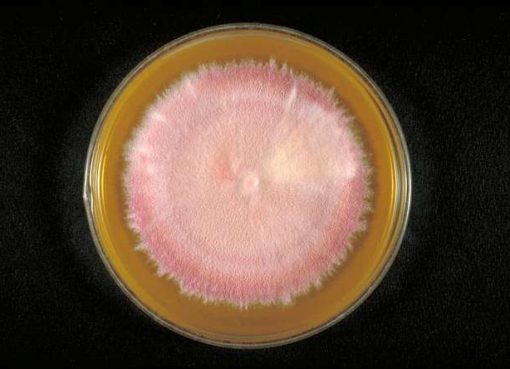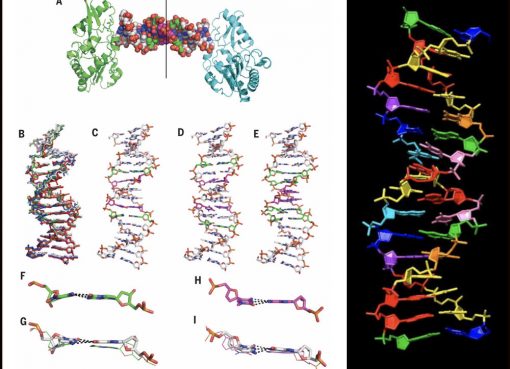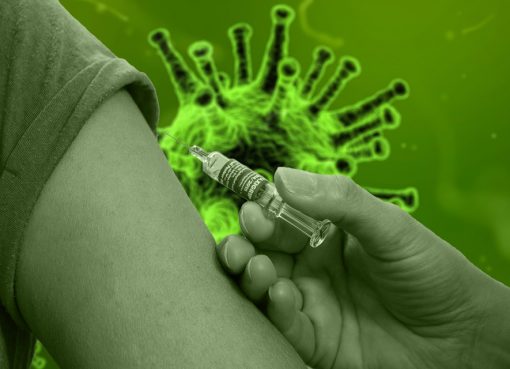Valuable skin care products from fish gut bacteria
Scientists from the Republic of Korea have identified some pretty strange molecules from the gut bacteria of fish that have skin-brightening and anti-wrinkle properties. A total of 22 compounds were identified from the gut bacteria Ruegeria atlantica and Pseudoalteromonas neustonica of Pagrus major and Acanthopagrus schlegelii, respectively. Sixteen (16) compounds were isolated from R. atlantica and six (6) from P. neustonica. Out these, the compound cyclo(l-Pro-d-Leu) has collagenase- and tyrosinase-inhibitory activities as well as it is stable under heat (50 °C) and UV light up to 6 days. The enzyme tyrosinase is involved in melanin production, which causes hyperpigmentation in aging skin and collagenase breaks down the structural protein collagen, causing wrinkles. Thus, the identified collagenase and tyrosinase inhibitory compound have anti-wrinkle and skin-brightening properties which could be promising compounds in future for the cosmeceutical industry.
Sources:
- American Chemical Society (2024). How fish guts might play a role in future skin care products. Science Daily. Retrieved on September 12, 2024 from sciencedaily.com/releases/2024/09/240905120902.htm.
- Kim, J., et al. (2024). Collagenase and Tyrosinase Inhibitory Compounds from Fish Gut Bacteria Ruegeria atlantica and Pseudoalteromonas neustonica. ACS Omega, 9 (32): 34259. http://dx.doi.org/10.1021/acsomega.3c09585.
Generation of high-quality feline iPSCs
Researchers of Osaka Metropolitan University have generated high quality footprint-free feline induced pluripotent stem cells (fiPSCs). The fiPSCs were generated from embryonic cells as well as juvenile feline uterus-derived cells. To generate fiPSCs, six transcription factors were used which were transferred via Sendai virus vector. The fiPSCs could be maintained under feeder-free and chemically-defined conditions. Moreover, they have the capacity to form all the three germ layers. The findings of this study are expected to open new windows for veterinary regenerative medicine research and to develop new therapeutic agents against various kidney or pancreatic problems in feline.
Sources:
- Osaka Metropolitan University (2024). Kidney disease in cats: High-quality feline iPSCs generated without genetic footprint. Science Daily. Retrieved on September 12, 2024 from sciencedaily.com/releases/2024/09/240904131010.htm
- Kimura, K., et al. (2024). Generation of footprint-free, high-quality feline induced pluripotent stem cells using Sendai virus vector. Regenerative Therapy, 26: 708 https://doi.org/10.1016/j.reth.2024.08.012.
Novel immunotherapy to repair spinal cord injury
Millions of people worldwide suffer from spinal cord injury which damages nerve cells, disrupts communication with the brain and rest of the body leading to lasting disabilities. It is very difficult to treat spinal cord injury and the complete recovery rate is very low. Hence, researchers from Washington University School of Medicine in St. Louis focused on developing a unique immunotherapy to minimize damage from traumatic spinal cord injury. Shortly after injury to the spinal cord, immune cells flood the site which consist of different subsets of immune-cells. Among these, T-cells play an important role in central nervous system injury. There are two types of T-cells that attack the spinal cord injury site, one is destructive and the other is protective. Scientists took the advantage of the protective or beneficial T-cells, which were modified and used in mice with spinal cord injury. The researchers observed that mice receiving modified T-cells showed improvement in injury within a week without any destructive autoimmune reaction. Thus, this immunotherapy has the potential to be used in human in future after proper investigation to treat spinal cord injuries or other neurodegenerative disorders like amyotrophic lateral sclerosis (ALS), Alzheimer’s or Parkinson’s disease.
Sources:
- Washington University School of Medicine. (2024, September 4). Novel immunotherapy improves recovery from spinal cord injury. ScienceDaily. Retrieved on September 12, 2024 from sciencedaily.com/releases/2024/09/240904130812.htm
- Gao, W., et al. Engineered T cell therapy for central nervous system injury. Nature (2024). https://doi.org/10.1038/s41586-024-07906-y.
Antimicrobial substance from gut bacteria to treat cholera
A team of researchers from the University of Texas at Austin, USA has identified a natural antimicrobial agent called microcin produced by bacteria in the gut which can fight against the pathogen causing cholera. The team also developed an artificial intelligence based new technique for finding microcin coding genes in bacterial genomes. It is the first known microcin that targets the cholera-causing bacteria. Microcins are highly selective, which target specific bacteria, thus, this microcin targets the bacterial strains that cause cholera. The researchers found about two dozen candidate microcins from non-pathogenic strains of Vibrio cholerae but the one that can kill pathogenic V. cholerae strains was identified to be MvcC. This microcin binds the periplasmic protein OppA resulting disruption of the cytoplasmic membrane of the pathogen.
Sources:
- University of Texas at Austin (2024). Newly discovered antimicrobial could prevent or treat cholera. Science Daily. Retrieved on September 12, 2024, from sciencedaily.com/releases/2024/09/240911142100.htm.
- Kim, S.Y., et al. (2024). Antibacterial action, proteolytic immunity, and in vivo activity of a Vibrio cholerae Cell Host & Microbe. DOI: 10.1016/j.chom.2024.08.012




